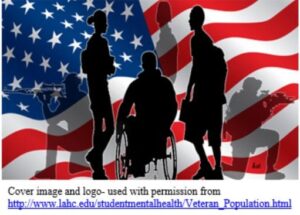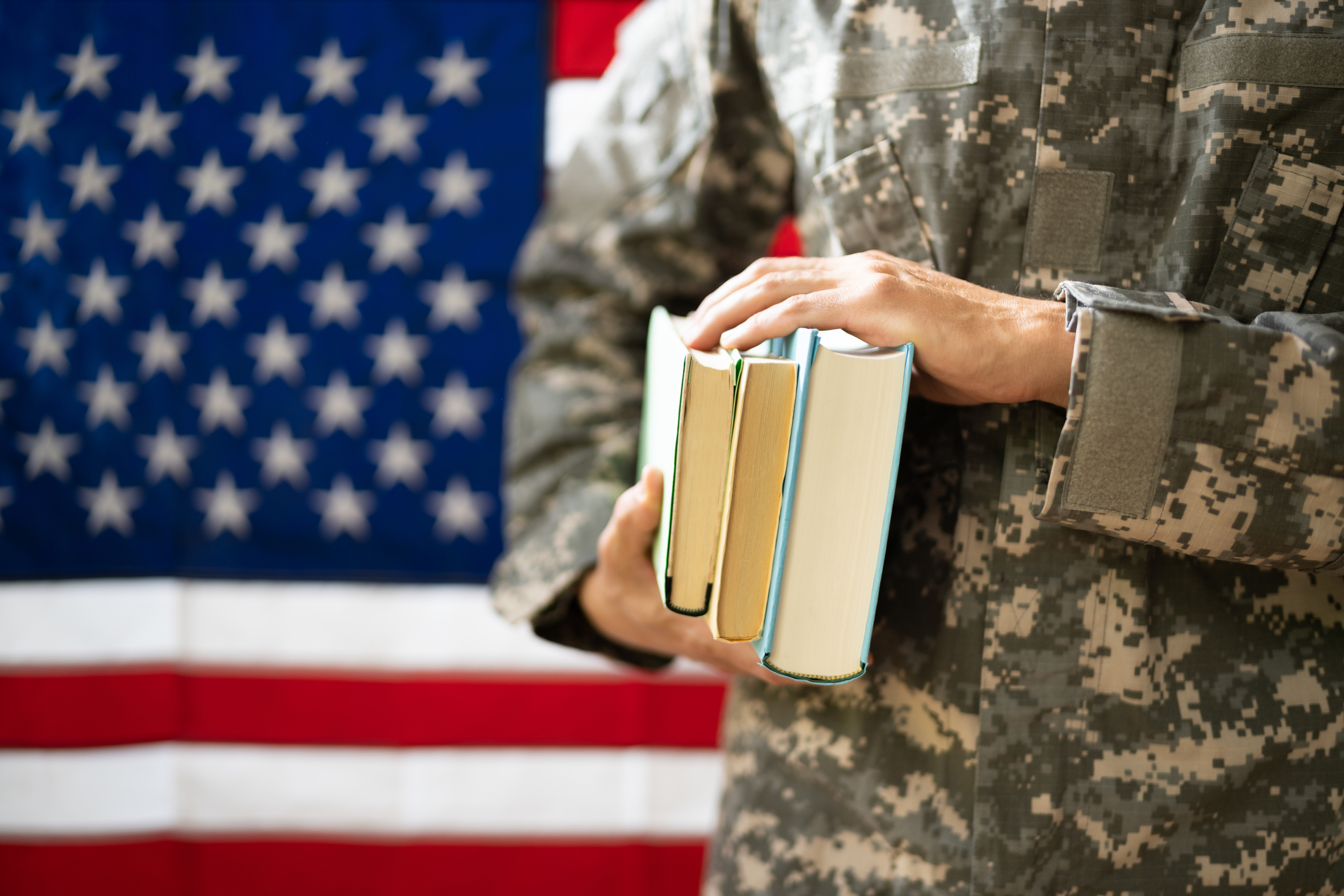by Jennifer Rea, PhD
Have you ever seen the movie Back to School? The plot of this 1986 film centers on a wealthy, uneducated father, Thornton Melon (Rodney Dangerfield). Thornton enrolls in college with his son, Jason (Keith Gordon), to show solidarity and the importance of earning an education.
Service members (SMs) and veterans transitioning to higher education may find themselves relating well to Dangerfield’s character, as they are likely to be older in age than their fellow classmates (Jenner, 2017). In fact, only 15% of student veterans (SVs) are traditionally aged college students (i.e., under 25 years old). That is, most SVs are between the ages of 24 and 40.
transitioning to higher education may find themselves relating well to Dangerfield’s character, as they are likely to be older in age than their fellow classmates (Jenner, 2017). In fact, only 15% of student veterans (SVs) are traditionally aged college students (i.e., under 25 years old). That is, most SVs are between the ages of 24 and 40.
The “Non-Traditional Student”
SVs are generally identified as “non-traditional students” as 47% of SVs have children, 47% are married, 42% work full-time jobs, and 66% are first-generation students (MentalHealth.VA.Gov, 2014). These differences may leave SVs feeling as though they don’t “fit in” on the college campus. They may also perceive this as an indicator that they are behind in their educational success (Blackwell-Starnes, 2018).
SVs also differ from the “traditional college student” in that their transition to higher education is a necessity (Jenner, 2017). In fact, one of the top reasons why individuals enlist in the military is to have access to educational benefits to pay for college (Boyd, Slate, & Barnes, 2019).
Many Enroll, but Few Complete
Although the financial burden to attend and complete higher education has been minimized due to the creation of the Post-9/11 GI Bill, other barriers persist. In fact, low rates of bachelor’s degree attainment and high rates of dropout and stop-out (i.e., withdraw temporarily from higher education in order to pursue another activity) are among returning veterans (Jenner, 2017).
 Since 2017, 822,327 veterans attended college, and of these 54% completed their degrees, while 18% are currently enrolled. These are promising statistics as the overall average college completion rate among non-veteran students is only slightly higher at 58% (Nadworny, 2019). However, these statistics indicate that more than a quarter of veterans (28%) who enroll in college are no longer enrolled and left before completing their degree (Blackwell- Starnes, 2018)
Since 2017, 822,327 veterans attended college, and of these 54% completed their degrees, while 18% are currently enrolled. These are promising statistics as the overall average college completion rate among non-veteran students is only slightly higher at 58% (Nadworny, 2019). However, these statistics indicate that more than a quarter of veterans (28%) who enroll in college are no longer enrolled and left before completing their degree (Blackwell- Starnes, 2018)
A Challenging Transition Made Smooth
Below I’ve compiled a list of the most commonly mentioned obstacles affecting SV success in higher education –the things that are likely influencing SV college completion rates. Although challenges exist as SMs transition to higher education, there are approaches that can help address their concerns. Therefore, I’ve also provided strategies for professionals as they serve SVs and their families to help make the transition to higher education as smooth as possible.


Keep in Mind: Some SVs may be afraid to disclose  their veteran identity to faculty or classmates because they fear potential stigma. Many SVs have perceived public stigma as a significant barrier to accessing mental health care services.
their veteran identity to faculty or classmates because they fear potential stigma. Many SVs have perceived public stigma as a significant barrier to accessing mental health care services.
Thus, caution is warranted for professionals supporting SVs as they engage in the previously mentioned strategies. This should also be taken into account when incorporating the strategies provided below for SVs themselves.
Strategies for Student Veterans & Families
- Check out these 5 steps to prepare for higher education from Military OneSource.
- Reach out to your school’s Military and Veterans Services Coordinator or Veterans Services Center for support.
- Try to keep communication open with your family, faculty members, educational staff, and your campus Veterans Center –voicing your goals, desires, and challenges.
- Continue to ask questions, especially ones that pertain to your educational benefits and academic support.
- Consider working in targeted academic services such as the campus writing center to foster a sense of belonging on campus.
References
Blackwell-Starnes, K. (2018). At ease: Developing veterans’ sense of belonging in the college classroom. Journal of Veterans Studies, 3(1), 18-36.
Boyd, C. D., Slate, J. R., & Barnes, W. (2019). Differences in the perception of educational benefits between male and female veterans in the United States: A national study. Journal of Interdisciplinary Sciences, 3(1), 27-36.
Cruise, T. R., & Misawa, M. (2019). “Resources for Military Veterans in Higher Education: A Web-Based Content Analysis,” Adult Education Research Conference. Retrieved from https://newprairiepress.org/aerc/2019/papers/6
Jenner, B. M. (2017). Student veterans and the transition to higher education: Integrating existing literatures. Journal of Veterans Studies, 2(2), 26-44.
MentalHealth.VA.Gov. (2014). Who are Today’s Student Veterans? Retrieved from https://www.mentalhealth.va.gov/studentveteran/studentvets.asp
Military OneSource. (2019). Education & Employment. Retrieved from https://www.militaryonesource.mil/web/mos/education-employment
Nadworny, E. (2019, March 13). College completion rates are up, but the numbers will still surprise you. Retrieved from https://www.npr.org/2019/03/13/681621047/college- completion-rates-are-up-but-the-numbers-will-still-surprise-you
Walter, A. (2019). Challenges faced by US student veterans transitioning to a community college. (Doctoral dissertation). Retrieved from Walden University Scholar Works.
Writers Biography
 Jenny Rea, Ph.D., is a military spouse and mom of four kiddos under six years. Jenny consults with OneOp and is an Assistant Professor of Practice in the Department of Human Services and Director of the Certificate in Military Families at the University of Arizona.
Jenny Rea, Ph.D., is a military spouse and mom of four kiddos under six years. Jenny consults with OneOp and is an Assistant Professor of Practice in the Department of Human Services and Director of the Certificate in Military Families at the University of Arizona.
Photo source: IStock













